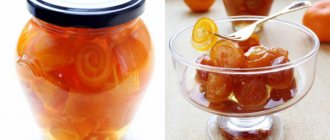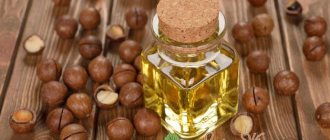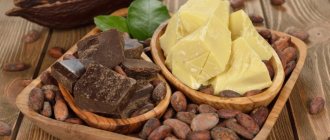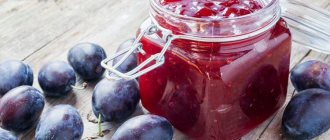A popular product - margarine, the composition of which includes not only animal, but also vegetable fats, which distinguishes it from butter - has long been entrenched in our kitchens. It is more affordable, which is why its popularity among buyers is only growing.
However, there is still a debate among housewives about whether it is worth using it in the kitchen and how useful or harmful this product is.
general description
Margarine is an emulsion product obtained from natural fractionated and modified oils of vegetable and animal origin. However, due to the fact that the main component is still vegetable fats, it contains virtually no cholesterol, and it is easier to spread on bread.
Margarine has a longer shelf life than regular butter, again due to the ingredients it contains.

Brief history of appearance
Margarine owes its appearance to a French chemist whose name was Michel Eugene Chevrel. He discovered margaric acid, and then, when Napoleon III needed a cheap but equally good analogue of butter for the army and the poor, he was able to create this product.
Chevreul was able to help the emperor by receiving the promised reward, and margarine continues to be used today.

Types of margarine and uses
Depending on its purpose, margarine is divided into three groups: table margarine, sandwich margarine and industrial margarine. The latter type is very rare in stores. Sandwich can be used not only for spreading on bread, but also as oil for frying. Industrial and table margarines are used in culinary recipes, confectionery, industrial and home baking.
Combined oils, where vegetable oils are used together with milk fat, are called spreads, or bulk oils, or spreads. It is always soft enough, thanks to emulsifiers, so it is easy to spread on bread or cookies. However, you won’t get good puff pastry with a spread. The flour and fat are mixed together, almost without kneading, then the dough crisps and melts in the mouth. But soft margarine cannot be cut.
The freshness of margarine is determined by its taste and smell. The premium product has a well-defined lactic acid aroma and pure taste. Consistency - homogeneous, dense, plastic. The shade of color depends on the added dye: yellow for fortified, pale yellow for dyed, white for undyed. Stains on margarine indicate a low-quality product. The cut surface should be dry and shiny.
Types, composition and nutritional value
As with any product, margarine has general recommendations for preparation. GOST regulates the ingredients and technology used to make margarine in Russia.
According to GOST, the composition of margarine must include:
- vegetable oil (sunflower, cottonseed, rapeseed, peanut, coconut or cocoa butter);
- fats of fish, marine mammals, milk fats, animal fats;
- auxiliary raw materials (cow's milk, flavorings, emulsifiers, etc.)
In different types of this product, the content of each of these elements varies in quantity. Thanks to this, the same variety of products appears, among which any buyer will be able to choose what he needs. This is especially important for those who follow a strict diet, where every calorie counts.
Dining room
High-quality table margarine has a uniform, dense and plastic consistency. It should not have any foreign taste or smell. Calorie content is 743 kcal (for a serving size of 100 grams).
The composition of table margarine includes:
- up to 60% salomas (hydrogenated whale oil);
- up to 30% vegetable fats;
- auxiliary raw materials.
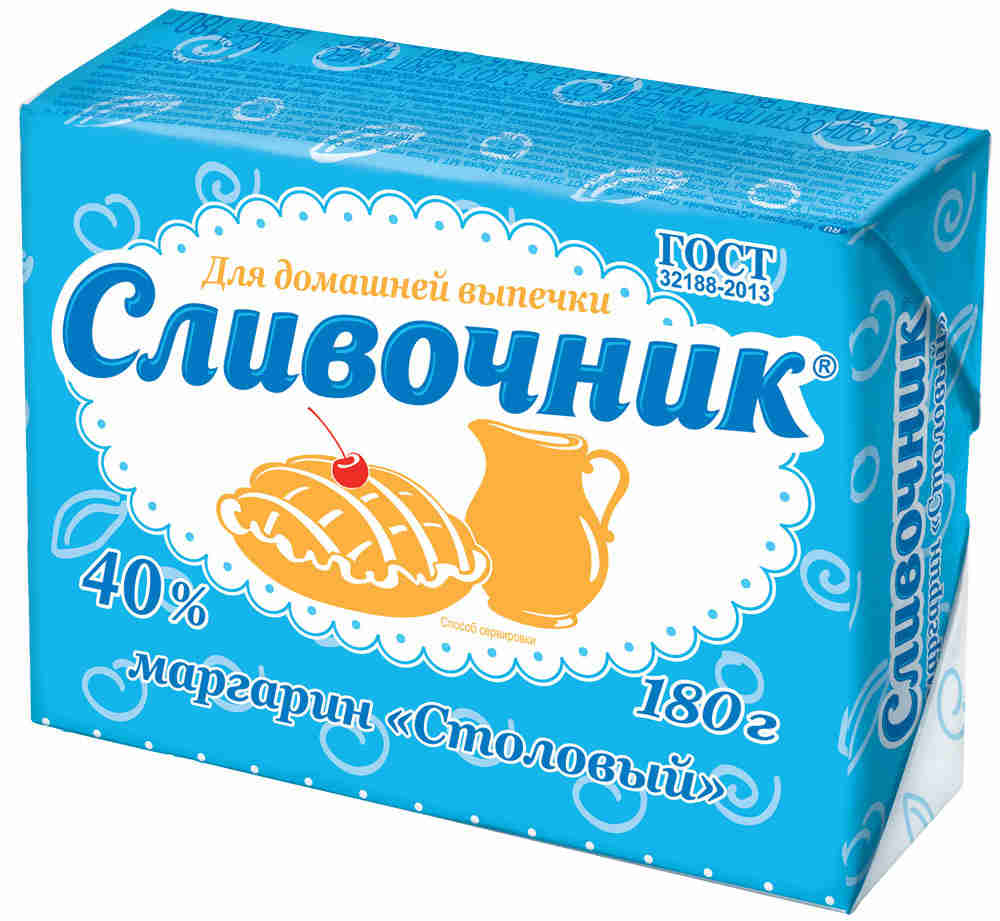
Lean
This type is made without the use of any animal fats. One of these is Pyshka. Calorie content is only 680 kcal.
The composition of Pyshka margarine and other lean products includes:
- vegetable oils (up to 75%);
- water;
- emulsifiers: soy lecithin, mono- and diglycerides of fatty acids;
- salt;
- acidity regulator citric acid;
- preservative potassium sorbate.
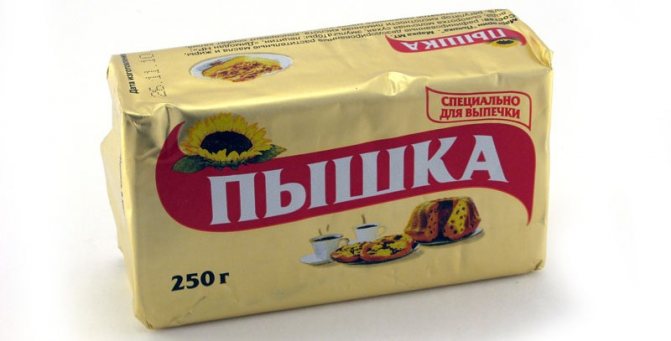
Creamy
This margarine is made by emulsification, that is, mixing vegetable natural fats and fats converted from liquid to solid, with the addition of butter. It has a calorie content of 745 kcal per 100 grams.
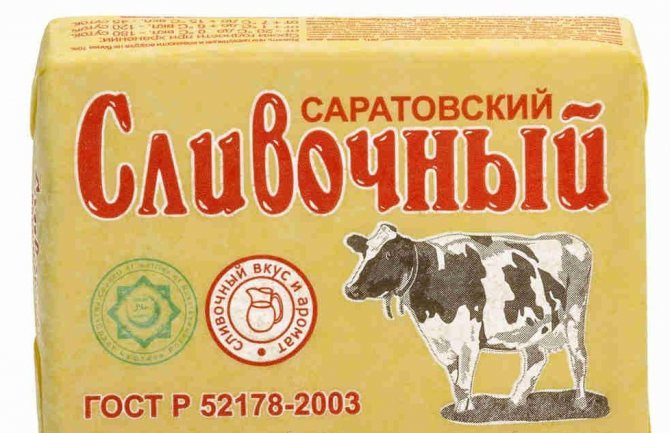
Lactic
Table milk margarine is a food product based on water and hydrogenated oils with the addition of milk and a fat content of over 39%. It belongs to table types of margarine and has a strong similarity to butter in taste, smell, properties, and appearance.
The product usually includes:
- hydrogenated oils;
- animal fats;
- milk fats;
- milk, dry cream or whey;
- emulsifiers;
- salt;
- flavorings and dyes.
Calorie content 743 kcal per 100 grams.
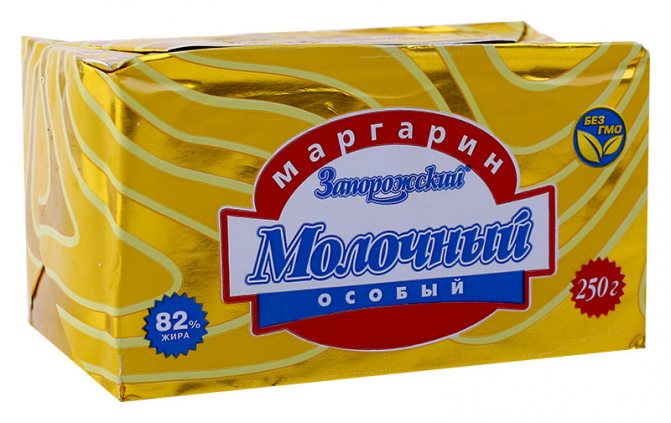
Kitchen
Kitchen margarine can be either vegetable or combined, since the technical requirements for it allow the use of both vegetable and animal fats, combined with vegetable ones.
It resembles butter quite vaguely, since the main thing is the desire to reproduce all the characteristics of animal lard. There are two types - hydrofat and vegetable lard. The first is prepared on the basis of vegetable oil brought into a solid state, the second contains 20% natural vegetable oil and 80% hydrogenated vegetable oil.
Spread
The spread, or melted mixture, is also one of the "butter products."
Divided into three different types:
- creamy vegetable, 50% of which is milk fat;
- vegetable-creamy - containing from 15 to 49% dairy product;
- vegetable fat - without dairy products.
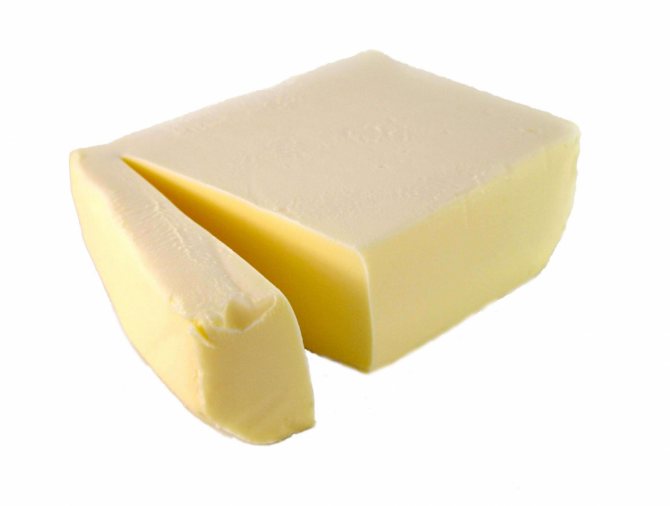
Why is margarine harmful?
The main danger of the product is the content of trans fats. They increase levels of bad cholesterol, increasing the likelihood of developing cardiovascular disease. Under certain circumstances, they can enhance inflammatory processes in the body. Trans fats are especially dangerous for children. They slow down the development process and increase the risk of an allergic reaction. The product also contains other chemical additives. They are removed from the body for a long time, having a destructive effect on it.
Why is margarine harmful to the body?
To understand whether margarine is more beneficial or harmful in baking, it is enough to study its composition. Statistics show that regular consumption of the product provokes the development of coronary disease. There is also an opinion that it can cause infertility. This is due to impaired blood circulation as a result of changes in the structure of blood vessels.
We recommend reading: What are the dangers of fat burners, side effects, instructions for use
The harmful effects of the product on health are as follows:
- decreased immunity;
- blockage of blood vessels with atherosclerotic plaques;
- reproductive dysfunction;
- increased likelihood of developing diabetes;
- metabolic disease.
In men, the presence of dishes with an oil substitute in the diet can cause changes in the quality of seminal fluid. This affects fertility and erectile function. In some cases, it leads to inflammation of the prostate gland.
What is more harmful - butter or margarine?
Unlike margarine, butter is of natural origin. It is based on cream. Unlike margarine, the product does not contain trans fats, which have a depressing effect on the heart and blood vessels. Most of the composition is represented by saturated fats, which reduce the level of bad cholesterol and increase the amount of healthy cholesterol. That is why butter does not provoke vascular pathology. Its undoubted advantages also include a pleasant creamy taste. A more budget-friendly analogue may have a chemical aftertaste. For this reason, it is not used for making sandwiches.
In addition, butter contains many vitamins and mineral salts. They have a beneficial effect on the functioning of internal organs, the condition of the skin, hair and nails. Margarine is more harmful than butter. Its only advantage is its calorie content. It is 713 kcal per 100 g. The calorie content of butter is 748 kcal per 100 g of product.
Attention! If you consume 30 g of butter for breakfast, you can significantly reduce the risk of developing cancer.
What is more harmful – margarine or palm oil?
Palm oil and margarine have about the same level of health hazard. Palm oil is a product of natural origin, made from refractory fats. They accumulate in the body, causing various diseases.

Palm oil is often added to chocolate
The origin of the product is considered to be Western Guinea. It is made from the fruits of the oil palm. Palm oil does not increase the level of bad cholesterol in the body. If the product is supplied in limited quantities, it does not have significant health effects.
What is more harmful – margarine or spread?
A spread is a product with a plastic structure, consisting of several types of fats. Its composition, unlike margarine, is fully regulated by GOST.
We recommend reading: Replaceable and essential amino acids in food: table, list
There are three types of spreads on sale:
- vegetable fat;
- vegetable-creamy;
- creamy and vegetable.
The nature of the product’s effect on the body depends on its composition. If low-quality raw materials were used in production, the spread is harmful to health. A good product, compared to margarine, less harmful. It saturates the body with useful substances and improves the digestion process.
Production technology
Margarine is obtained by artificially hardening natural fats and dairy products. This result can be achieved using hydrogenation and transesterification. Hydrogenation is somewhat outdated; moreover, after such a process, the output is a harmful product containing trans fats. The transesterification method is now the most popular, since thanks to it the content of trans isomers can be minimized.
Production is carried out according to the following scheme:
- Preparation of fatty raw materials.
- Preparing water or milk.
- Preparation of auxiliary raw materials.
- Preparation of an emulsion from existing components.
- Supercooling followed by crystallization and mechanical processing.
- Tempering.

Production and types
Various vegetable oils are used to make margarine: soybean, rapeseed, sunflower, corn, peanut. Its production is a multi-step process that consists of the emulsification of a mixture of vegetable oils and fats, which can be modified through fractionation, transesterification, and/or hydrogenation of vegetable fats.
At the final stage, synthetic vitamins, flavorings and dyes are added to the mixture and then cooled.
All margarines are usually divided into products of plant origin or vegan and made with the addition of animal fats.
Russian legislation provides for the following classification of margarines:
- MT, or hard margarine, which is used in the food industry. It is considered the least healthy of all margarines due to its high trans fat content;
- MTS – intended for the production of puff pastries;
- MTK - used for the preparation of confectionery products such as cakes, pastries, cream, soufflé, etc.;
- MM or soft margarine intended for human consumption;
- MZhK and MZhP are margarines in liquid form, which are used for frying and in the production of bakery products.
Ingredient Features
Like production methods, all ingredients have their own specific properties. Knowing their characteristics is important simply because each of them affects the human body in a certain way.
Polyunsaturated fats
Polyunsaturated fats are lipids in which the hydrocarbon chain has two or more carbon-carbon bonds. Polyunsaturated acids consisting of them are beneficial for humans, since fats are not saturated, which means they do not contribute to the formation of cholesterol plaques and help reduce blood pressure.
At the same time, there is a risk that they can serve as catalysts for the development of certain cancers, if any in humans.
Omega-3 fatty acids
They belong to the family of unsaturated fatty acids. According to scientists, the human body is not able to produce some of their types in sufficient quantities, so it is very important to get them with food.
Research has shown that omega-3s are directly linked to improved cognitive function and behavior, are vital for the gray matter of the human brain, as well as retinal stimulation and neurotransmission.
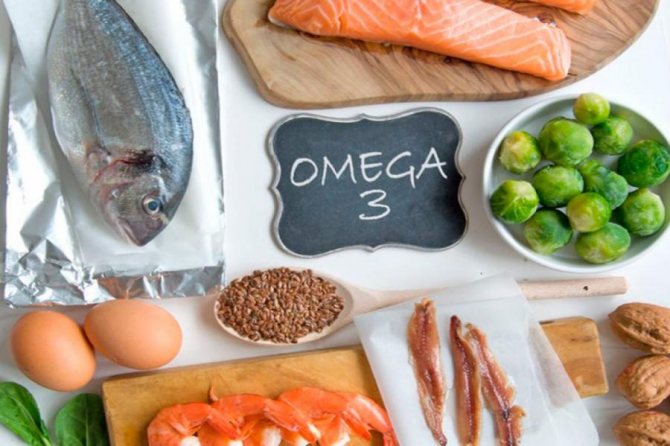
Plant sterols and stanols
Plant lipids are essential for cell membranes and help control their fluidity.
Due to their similar structure to cholesterol, they are able to compete with it, as a result of which cholesterol is not absorbed by the body and is excreted through the intestines. Thus, cholesterol levels are reduced by 7-10%, thereby reducing the risk of developing cardiovascular diseases.
Unsaturated fats
Unsaturated fats are made up of unsaturated fatty acids. Contrary to popular belief, they are natural to the human body. They are easier to digest and do not cause cardiovascular diseases or cancer.
Unfortunately, due to their better meltability than saturated fats, they are rarely used for food production.
Omega-6
Omega-6 is usually considered in conjunction with omega-3 fatty acids, because it is their ratio in the body relative to each other that is responsible for the consequences of their consumption. The ideal ratio is 4:1 - in this case, omega-6 can reduce the risk of cardiovascular diseases.
However, when this balance is disturbed, the emergence and development of a number of diseases can be triggered: from an imbalance in metabolic processes to heart problems.
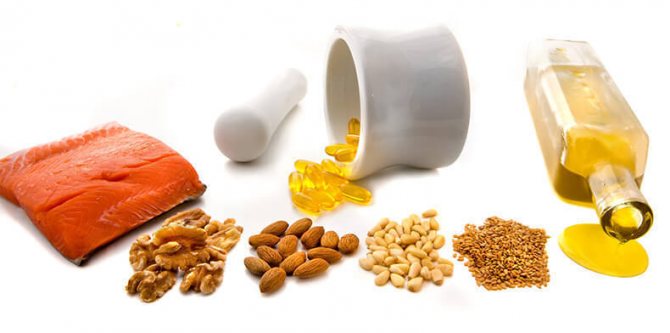
Saturated fats
Consist of saturated fatty acids. The main negative effect of their consumption may be the formation of sclerotic plaques on the inner surface of the arteries.
They can also provoke the occurrence of cardiovascular diseases, diabetes and obesity.
Trans fats
One of the subtypes of unsaturated fats, mainly obtained during the hydrogenation of these same fats.
WHO and other organizations call for avoiding foods containing trans fats, as they increase the risk of heart and vascular diseases and can also be fatal. It is because of them that margarine, the benefits and harms of which are constantly discussed, is such a controversial product.
Cholesterol
Contained in cell membranes throughout the body, maintaining their stability, helping to produce vitamin D in the required amount, and also stimulating the adrenal glands to produce various steroid hormones and bile acids.
However, due to differences in density, cholesterol is divided into “good” and “bad”. When bad is in excess, a person may experience problems with the liver, kidneys, and also begin to form sclerotic plaques, which has a detrimental effect on blood vessels and the heart.
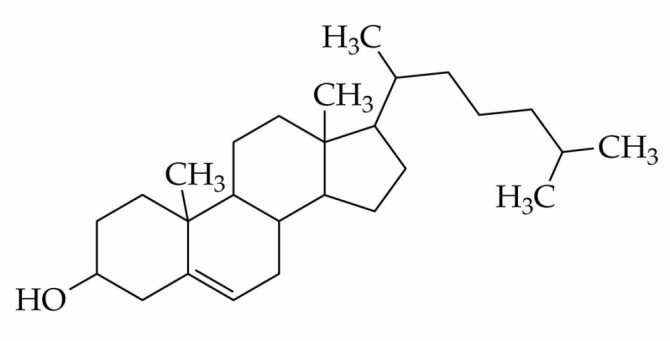
What is the benefit
The benefits of margarine are mainly practical, although it can also have a positive effect on health due to the content of unsaturated fats and fatty acids.
Another plus is how much margarine costs. Natural butter is expensive for baking, and a thrifty housewife will always prefer good margarine to it if she needs it to cook something big. You don’t have to be afraid that it will spoil, and feel free to buy for future use. And when fasting, it is logical to use margarine as a replacement for butter.
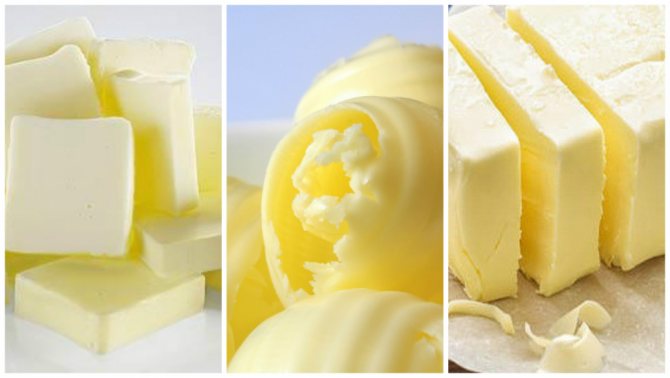
How to select and store
First of all, evaluate the integrity of the packaging - do not take it in crumpled, folded foil, this can be dangerous.
Read the ingredients. It is important that the volume of trans fats is less than two percent. Be sure to check the date of manufacture.
At home, unwrap the pack. The product should be light yellow, matte. Make sure there are no gray stripes on it. This means it is spoiled.
In order to preserve it longer, you just need to put the pack in the freezer. It is better that the product is stored in its original packaging, as it does not allow light to pass through. Video From this video you will learn which is more harmful: spread, butter or margarine.
